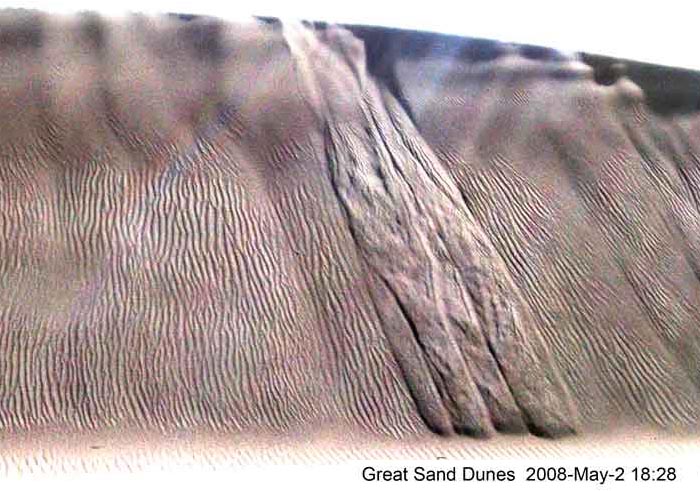
Fig 1. Sand interacting with leeside eddy

Fig 1. Sand interacting with leeside eddy
Wind blowing over a dune can create an eddy current ('recirculation cell') in the lee of the dune (see Lee-side eddy currents). Sand blown over the brink accumulates in deposits on the upper slipface, forming a low mound or cornice, until eventually the sand avalanches, and the process repeats.
The video clip below (fig 2) shows sand blowing over the brink of a dune approximately 3m high, carried by wind estimated to be moving at about 50 to 70 km/h. Some sand moves upward after crossing the brink, presumably lifted by a leeside eddy, as illustrated in figure 1.
Fig 2. Leeside eddy in gale-force wind
The field of view of the video clip includes most of the dune height. Avalanches typically started roughly a meter below the brink, implying that most grains were depositing above that -- though some grains were falling out of suspension even meters beyond the toe of the slipface (the rain of grains striking the plastic bag protecting the camera is audible in the video clip; note also the rustling of the plastic bag, reflecting the low-amplitude gustiness of air in the wind shadow -- much different from the steady roar just a meter or two higher).
The black material on the slipface in the video is easily-moved light organic debris (mostly small seed husks). It rests largely undisturbed on the surface despite the gale-force wind crossing the brink.
 |
Along with the video in fig 2, there's a new video compilation that more clearly shows sand blowing over the brink onto a slipface. See Coral Pink Sand Dunes video, especially 'Part Two'. |
After a windy episode, often there are cornice deposits remaining on the upper slopes of slipfaces, sometimes cut by avalache troughs. Figure 3 shows the profile of the sides of one such trough on a 7m-high dune, determined by measuring the depth of the trough relative to the shoulders of an avalanche trough that cut through it. The floor of the trough is presumably at a constant angle (the angle of repose) and, if so, the difference between the shoulders and the trough is a measure of the profile of the cornice deposit:

Fig 3. Depth of a cornice deposit, downslope of brink (profile of cornice deposit?)
The cornice deposit measured above (fig 3) presumably formed as the wind was losing strength and thus probably differs from the shape of deposits made during strong wind. Even so, it extends much further downslope than the deposits in the photo below (fig 4) that were formed by wind barely able to move sand. Below, the length of the slipface from brink to toe of the left-most avalanche is ~115cm.

Fig 4. Cornice deposits formed by low-speed wind
The shape of a cornice deposit is likely influenced by:
A cornice deposit might spread further downslope in the following conditions:
A slipface can form only if a cornice can obtain a slope at an angle greater than the angle of yield (avalanching). This can only occur if the dune has enough length on the leeward side for the failure point of the deposit to be on the slope. The shortest cornice would probably occur with minimum wind able to move sand, low-density easily-moved sand, angular sand, and steady wind.
Below are some slipface photos with cornices and natural avalanche tongues. These photos were taken in calm conditions, so the cornice and slipface we see is what remained after a sand-moving wind event, showing us what is created and remains by wind that is tapering off.
The photos have been contrast-enhanced to make details more visible in the sand (but also makes unreal and garish colours).
Below, the three avalanche tongues with more sharply-defined features are interpreted to have occurred most recently, hence having had less time for grainfall and saltating sand to soften their features by shaping and burial. The avalanche tongues have the typical 'necktie' shape, with the narrow point centred roughly on the cornice inflection point, and receding scarps up to the brink.

Fig 5. Cornice and avalanche tongues after a wind event. Contrast-enhanced.
The slipface below has a complex cornice. As hinted by the wind ripples on the slipface, perhaps wind from the right transported sand over the brink laterally under the influence of a helical eddy and recirculation cell. (The steep diagonal rays are lens artifacts from the sun, which is shining nearly parallel to the slipface, accentuating surface details.)

Fig 6. Complex cornice. Contrast-enhanced.
Kleinhans, M. G., H. Markies, S. J. de Vet, A. C. in 't Veld, and F. N. Postema, 2011. Static and dynamic angles of repose in loose granular materials under reduced gravity. J. Geophys. Res., 116, E11004, doi: 10.1029/2011JE003865